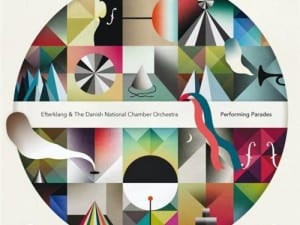Imagine if that old games console in the attic could play you a tune. Chiptune music takes its inspiration – and its source material – from the unlikeliest of sources, and is creating its own superstars.
Part of the enduring appeal of music, of all genres, is how it can be a touchstone. A song can evoke specific memories, taking you back to a different part of your life. Even before the first chords have finished playing, you’re back in high school, or losing your virginity, or partying at Glastonbury that one time when the heavens opened. But when a piece of music happens to be composed of the sounds associated with youth and growing up, things get a bit more, well, memorable. This is chiptune music.
If you’ve never heard of chiptune music, then don’t be too surprised. For although it’s been around for several years, it has only recently started to break into the wider music consciousness. At its most basic, the genre consists of music made from the distinct digital sound tones generated by old school video game systems. Imagine that the bleeping and blooping from a Nintendo Entertainment System (NES) or Gameboy has been manipulated and programmed to create a full-length, fleshed out piece of pop music. That’s chiptune. And while it might sound extremely simplistic and one-dimensional, there is a lot more to the genre of music than first meets the ear.
Just ask Pixelh8. The composer, otherwise known as Matthew Applegate (b. 1977), is regarded as one of the leading chiptune producers in the UK today. Applegate grew up in suburban Britain, initially listening to artists like Prince and REM. However, an early decision to get involved with electronic music led to a unique realisation – if he was going to be successful, he had to take the sounds of his environment. It was a path that would, somewhat incongruously, lead him directly to chiptune.
“I found out about people like [composer] John Cage, and started experimenting more and taking the sounds from my environment,” says Applegate, “and my environment was suburbia. I was surrounded by technology, surrounded by video games and I thought, I’m not Mozart or Bach, I don’t have tweeting birds at the bottom of my garden. I have things buzzing and alarms going off.” Like many growing up in the 1980s and early 1990s, Applegate had access to early gaming systems, and he found himself becoming increasingly inspired by their seemingly straightforward noises.
To create chiptune music (at least, if you’re using the actual console hardware as opposed to a software instrument on a PC) you have to be familiar with certain programming languages – including some as esoteric as the 6502 Assembly Language for the NES. Along with Nintendo, Applegate learned to take apart and reprogram machines like the ZX Spectrum and BBC microcomputers. Soon, he was programming the sound chips of these machines, 8-bit processors (the term refers to the amount of data they can handle) with a very limited number of sounds. But despite, or perhaps because of, these limitations, Applegate soon found himself creating swirling soundscapes and leftfield pieces of pop music.
Today, Applegate is a full-time composer, who has not only produced full-length albums of chiptune music, but has also worked to create audio projects with Cambridge University and Bletchley Park. “With all the technology invading our lives and taking away our relationships with other people,” he says, “stripping away connections to everyone else, people are taking this technology that often separates us and using it to write something primordial to reconnect people and express themselves. They are taking something very corporate, something designed to be bought and sold, and turning it into something that is their passion and with which they communicate; I think it’s fantastic. Music has a very strong mental and physical impact on people. When you play people rhythm, they respond to it emotionally. I like the fact that we are taking something that is very electronic and putting emotions into it.”
Chiptune music has come a long way since consoles like the early Nintendos were the norm in many households. For starters, it’s as close to mainstream acceptance as it will ever be, and has become an established part of the musical landscape worldwide. It has its own festivals, including Blip Festival in New York City (the city seems to be very much a base for chiptune, housing pioneers like Bitshifter and Nosleep). And like many ascendant genres, it has its own superstars.
Take Anamanaguchi. The New York band – who combine traditional guitar and drum sounds with NES, Gameboy and Commodore 64 sound effects to create a frenetic pop music – are riding the crest of a wave at the moment. This is largely thanks to their involvement in the massively popular Scott Pilgrim comic book series, or rather, the recently released film and accompanying licensed videogame. It was the game that got them noticed; a decidedly retro affair, it was a side scrolling Playstation Network beat-‘em-up, reminiscent of classic games like Streets Of Rage, with wonderfully old school graphics. Anamanaguchi was a perfect pick to provide the soundtrack, and it’s won them, and chiptune, legions of new fans.
Pete Berkham (b. 1988) plays guitar and NES for the group. “Scott Pilgrim just came to us – it was pretty sweet actually,” says the laid-back musician.” We put out [our album] Dawn Metropolis in March 2009, and that was the first album we did that wasn’t just a recording in my basement. It wasn’t so much a departure as an evolution. Four months later, I got a call from [game developer] Ubisoft asking us for some music for a game, but it was a really weird moment when we were asked to do it. We were on tour and at this house party, and I had fallen asleep on the couch. There was a coffee table in front of the couch with a copy of Scott Pilgrim Volume 1. I’d never read it, but I looked at it and thought, this is totally awesome. Four hours later, we woke-up to get some coffee, and that’s when I got the phone call.”
Anamanaguchi’s music typifies much of the genre’s output. Much of chiptune is suited to fast, frenetic and hugely upbeat music. Certainly for Berkham’s band, it works: they have a dedicated live following, and one of the few acts to successfully translate chiptune into a traditional live environment. You’re as likely to see them rocking out at a student pub as you are to see them onstage at Blip Festival – even if sound engineers look at them very strangely when asked to configure a Gameboy.
More importantly, Berkham gets the appeal of chiptune music. He gets the raw excitement that comes from hearing extremely evocative sounds transformed – especially in a live setting. “You’re hearing the most primitive of electronic sounds coming out of huge speakers,” he says, “and that’s just awesome to me. It’s almost the same feeling you would have got in the 1970s, when all you had was ABBA and the Bee Gees, and then all of a sudden some dude at CBGB, the New York City underground rock club, was playing this huge, distorted guitar. We’re not nerds, we’re not cool, we’re not electronic, we’re not rock, so you just see every kind of person at the show, and they’re all having a good time.”
Chiptune has been around as a genre long enough (albeit in a slightly low-key way) to have developed its own internal debates and points of view. For starters, there are some who don’t even consider it a genre – at least, not in the traditional sense. Applegate, for one, is of the opinion that it is merely a set of tools for creating music, rather than a musical entity in its own right.
“It’s the instrumentation,” he muses. “You can do quite a lot with it. You can do quite dancey stuff and you can do ballads. You can combine live drumming and singing with chiptune music. So for me, it’s not a genre at all – it’s just instrumentation that you can do a lot of things with.”
And perhaps that’s the most surprising thing about chiptune. Whether you gravitate towards the massively fast paced and funky Anamanaguchi or the more considered Pixelh8, any chiptune song has the potential to become a touchstone of its own. Its seemingly basic sound effects can evoke extremely specific memories, taking the listener back to a time when life was simpler and all you needed to keep you occupied on a rainy afternoon was a plastic console and Super Mario Bros.
For more info on Pixelh8, visit www.pixelh8.co.uk, and on Anamanaguchi, visit www.anamanaguchi.com.
Rob Boffard





